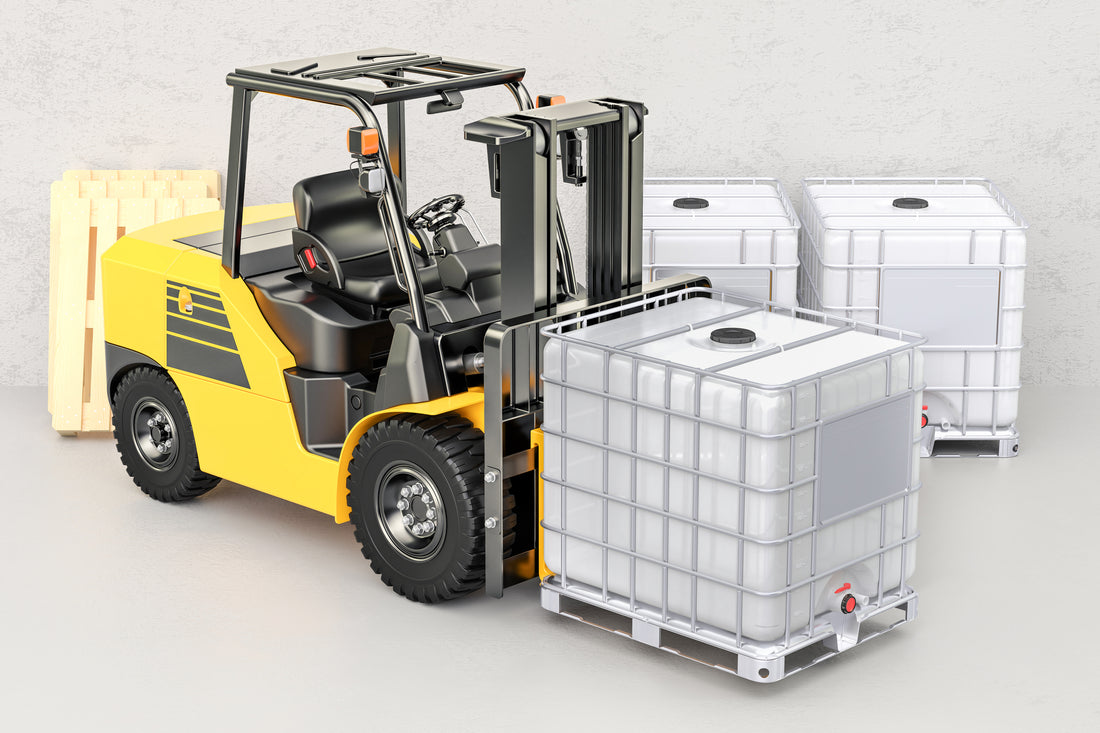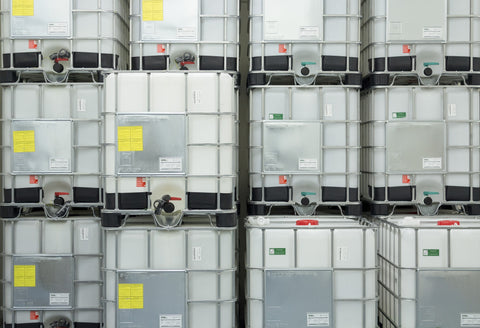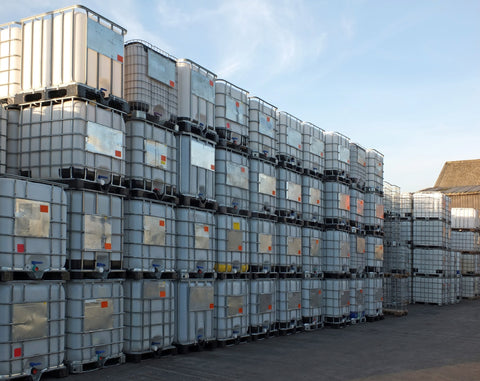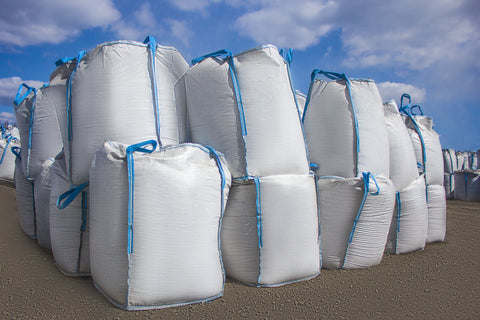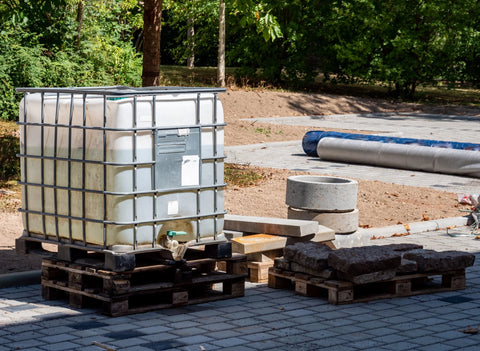Common IBC Tank Capacities, Materials, and Costs
Intermediate Bulk Containers, or IBC totes, are a highly popular storage and transportation solution for various businesses. IBC totes are available in a wide range of shapes and sizes, from poly IBC totes to carbon steel caged totes, making them ideal for diverse applications. Selecting the right IBC tote for your business requires understanding its capacity, material, cost, and weight.
When choosing an IBC tank, it's essential to consider its weight, which can vary depending on several factors, such as the capacity and material used. An Intermediate bulk container can be made of many different materials, high-density polyethylene (HDPE) carbon steel, stainless steel, or other combinations of these. The weight of an IBC tote can affect its portability and storage, and it's important to know the weight when it's empty or full. In this blog post, we'll provide an overview of the common weight of IBC totes and how it can impact their usage.
Knowing the weight of an IBC tote is critical for ensuring the safe transportation and storage of various materials, such as chemicals, food-grade products, or even water storage. Additionally, IBC totes are constructed with a steel cage that adds to their weight, making it essential to choose the right tote that suits your business needs.
Overall, understanding the weight of IBC totes is crucial for selecting the right intermediate bulk container for your business. Whether you need to transport or store liquids, chemicals, or other materials, knowing the weight of an IBC tote will ensure safe and efficient usage.

IBC Common Footprint Dimensions
The footprint of an IBC, which refers to its base dimensions, is an essential factor to consider when choosing an IBC tank for your business needs. The common footprint dimensions of an IBC tank can vary depending on the manufacturer and the intended application. In this blog post, we will provide an overview of the most common IBC footprint dimensions to help you make an informed decision.
One of the most common IBC footprint dimensions is 48" x 40". This size is often used for general-purpose applications and is the most widely recognized IBC footprint dimension. The 48" x 40" IBC containers are stackable, making them ideal for storage and transportation.
Another common IBC footprint dimension is 45" x 45". This size is often used for chemical applications, as it allows for easier handling and transportation of hazardous materials. The 45" x 45" IBC tanks are also stackable, allowing for efficient storage.
The 42" x 48" footprint dimension is another common size for IBC tanks. This size is often used for food-grade applications, as it allows for easier handling and transportation of food products. The 42" x 48" IBC containers are also stackable, making them an ideal option for storage and transportation.
It's important to note that while these are the most common IBC footprint dimensions, there are other sizes available on the market. It's crucial to choose the right footprint dimension based on your specific application requirements. Consider factors such as the weight and dimensions of the materials you're storing or transporting, as well as any regulatory requirements when selecting the right IBC footprint dimension.
Comparing IBCs and Commonly Used Portable Tanks
When it comes to storing and transporting liquids and other materials, businesses have a range of options to choose from. Two common options are Intermediate Bulk Containers (IBCs) and portable tanks. In this blog post, we will compare IBCs and commonly used portable tanks to help you make an informed decision for your business needs.
First, let's take a closer look at IBCs. These containers typically have a capacity of 275 to 330 gallons and are designed for transporting and storing liquids and other materials. IBCs have a rigid structure, typically made of materials like plastic, steel, or composite, which makes them more durable than many portable tanks. Additionally, IBCs are stackable, which can save space and make them more efficient for storage and transportation.
Portable tanks, on the other hand, are generally larger and have a capacity of up to 7,000 gallons or more. These tanks are designed to be easily transported by trucks or trailers and are typically made of materials like plastic, steel, or aluminum. Portable tanks are ideal for larger volumes of materials, particularly when they need to be transported over longer distances.
When it comes to choosing between IBCs and portable tanks, there are a few key factors to consider. Here are some pros and cons of each option:
IBCs:
Pros:
-
Smaller size and weight, making them easier to transport and store
-
Stackable, allowing for efficient use of space
-
Durable and long-lasting
Cons:
-
Lower capacity compared to portable tanks
-
Not ideal for longer-distance transportation
Portable Tanks:
Pros:
-
Higher capacity compared to IBCs
-
Ideal for longer-distance transportation
-
Versatile, with many different sizes and materials available
Cons:
-
Larger and heavier, making them more challenging to transport and store
-
Not stackable, which can require more space for storage
Ultimately, the choice between IBCs and portable tanks will depend on your specific business needs. Consider factors such as the volume and type of materials you're transporting, the distance of transportation, and the space available for storage when making your decision.

A Summary of IBC Tote Weights | Empty and Full
In conclusion, the weight of IBC totes varies depending on their capacity, material, and whether they are empty or full. While the weight of empty totes may seem insignificant, it is important to consider it when transporting or stacking multiple totes. On the other hand, the weight of a full tote can have a significant impact on transportation costs and handling requirements.
As a helpful starting point, below, you can see the weight of empty totes of the most common sizes.
-
220 Gallon: 125-140 lbs
-
250 Gallon: 135-150 lbs
-
275 Gallon: 150-170 lbs
-
330 Gallon: 180-200 lbs
-
350 Gallon: 190-210 lbs
-
450 Gallon: 250-280 lbs
-
550 Gallon: 290-320 lbs
Please note that these are just general estimates and the actual weight of an IBC tote may vary based on the specific design, material, and other factors.
It's important to always consult the manufacturer's specifications to determine the exact weight of an IBC tote before using it for storage or transportation. Additionally, be sure to follow proper handling and transportation procedures to ensure the safety of workers and the integrity of the totes.
Overall, understanding the weight of IBC totes is crucial for businesses that rely on them for storage and transportation. By carefully considering the weight and other specifications of IBC totes, businesses can ensure that they are using the most efficient and effective solutions for their needs.


